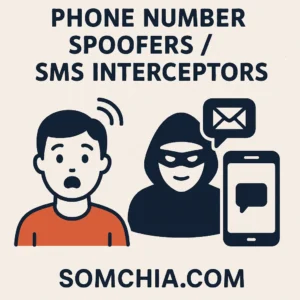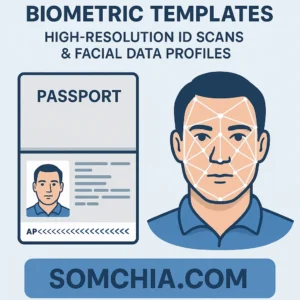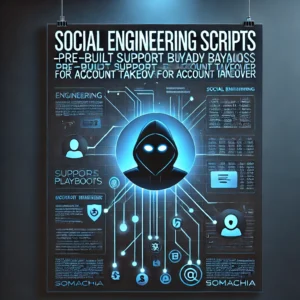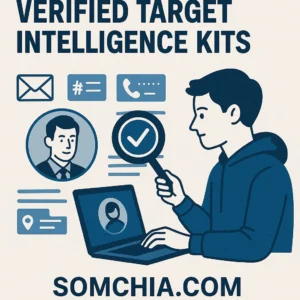Mass SMS Gateways – How Phishing Campaigns Exploit Messaging at Scale
$2,500.00
When misused, SMS gateways offer criminals:
✅ Bulk message automation (API or dashboard access)
✅ Sender ID spoofing (appearing as banks, delivery firms, or brands)
✅ Region targeting (choose country codes or local carriers)
✅ Real-time delivery reports (track campaign success)
✅ Anonymous signups with crypto payments
Description
What Are Mass SMS Gateways?
A Mass SMS Gateway is a platform that enables users to send thousands (or even millions) of text messages simultaneously. While SMS gateways are widely used for legitimate business purposes—such as marketing, notifications, and two-factor authentication—they are also exploited by cybercriminals to distribute phishing links and scams at scale.
In underground campaigns, attackers leverage anonymous or poorly regulated SMS gateway services to deliver malicious text messages that trick recipients into:
-
Clicking on fake banking or crypto exchange links
-
Handing over login credentials and OTPs (one-time passwords)
-
Downloading mobile malware (spyware, trojans, banking apps)
-
Paying into fake promotions or scams
This technique is often referred to as “smishing” (SMS + phishing).
Why Are Mass SMS Gateways So Dangerous?
Unlike email phishing, which often gets filtered by spam engines, SMS messages feel personal and urgent—making users more likely to trust and act on them. Criminals value SMS gateways because they allow:
✅ High-volume distribution – Thousands of scam messages per minute
✅ Anonymity – Many providers allow spoofing of sender IDs
✅ Bypassing spam filters – SMS often lands directly in the inbox
✅ Low cost – Bulk SMS credits make large campaigns affordable
✅ Global reach – Target victims across multiple countries simultaneously
That’s why smishing has become one of the fastest-growing phishing attack vectors worldwide.
Real-World Case Studies (Threat Actor Notes)
1. Banking Phishing Campaigns
Attackers spoofed messages appearing to be from Wells Fargo and Chase Bank, urging users to “verify suspicious activity.”
-
Victims clicked links leading to fake login pages.
-
Credentials were harvested and used for account takeovers.
2. COVID-19 Relief Scams
During the pandemic, SMS gateways were used to blast messages about “stimulus payments” or “government aid.”
-
Clicking links redirected users to credential harvesting pages.
-
Fraudsters submitted fake unemployment claims with stolen data.
3. Crypto Exchange Impersonations
Users received texts claiming their Coinbase or Binance accounts had login attempts.
-
Links led to fake sites requesting MFA codes.
-
Attackers drained wallets once OTPs were captured.
4. Delivery & Parcel Scams
Spoofed DHL, FedEx, and USPS messages asked recipients to “reschedule delivery” or “pay small customs fees.”
-
Victims entered card details into phishing portals.
-
Credit card fraud followed.
5. MFA/OTP Bypass Attacks
By posing as financial institutions, attackers tricked users into providing one-time verification codes.
-
These codes were then used to hijack bank logins and crypto accounts.
Product Quality & Features (Criminal Exploitation Angle)
When misused, SMS gateways offer criminals:
✅ Bulk message automation (API or dashboard access)
✅ Sender ID spoofing (appearing as banks, delivery firms, or brands)
✅ Region targeting (choose country codes or local carriers)
✅ Real-time delivery reports (track campaign success)
✅ Anonymous signups with crypto payments
For defenders, understanding these features is critical for detecting and shutting down smishing campaigns.
Geolocation Targets
Cybercriminals often focus their SMS campaigns on regions with:
-
High mobile penetration (US, UK, Canada, EU)
-
Financial institutions with SMS-based MFA
-
Developing regions with weaker telco filtering
Defensive OPSEC Tips (For Users & Organizations)
-
Never click links from unknown SMS messages.
-
Verify sender IDs—spoofing is common.
-
Use authenticator apps instead of SMS for MFA.
-
Train employees with smishing awareness simulations.
-
Deploy carrier-level and endpoint detection filters.
-
Report suspicious SMS to your telecom provider or national cyber agency.
⚠️ Legal Disclaimer
This content is provided for cybersecurity awareness, threat intelligence, and defensive training only.
We do not endorse or encourage the use of SMS gateways for fraudulent campaigns.
Unauthorized use of such services for phishing or scams is illegal under international cybercrime laws.
Suggested Pairing Resources
-
Smishing Simulation Toolkit (for enterprise training)
-
Mobile Threat Defense (MTD) Solutions
-
Anti-Phishing Awareness Courses
-
Carrier-Level SMS Filtering Reports
-
MFA Hard Token Solutions (YubiKey, FIDO2 Keys)





